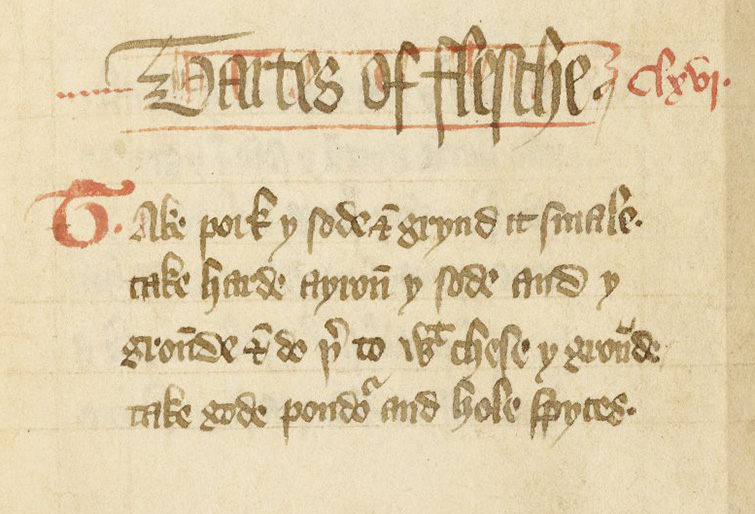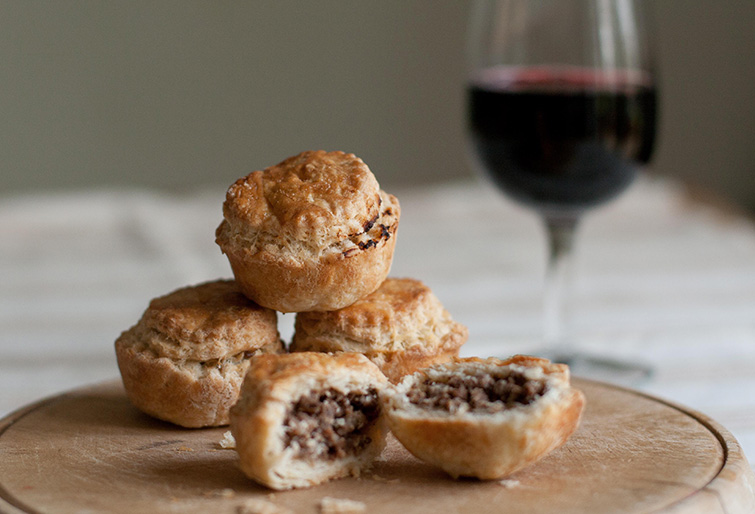 |
| Medieval recipe |
From English Heritage:
Today there’s nothing remotely savoury about the mince pie. But this wasn’t always the case. Like so many dishes, the mince pie has evolved over the centuries. We recognise them as the quintessential Christmas confection, packed with citrussy dried fruit plumped with brandy, spiked with spices and wrapped in crumbly pastry. However, long before Nigella introduced salted caramel to the nation, the English had a fascination for combining the sweet with the savoury.Share
Our mince pies undoubtedly have medieval origins, although we would not immediately recognise them. Pie crusts were known as coffins, and used as a vessel to cook delicate foods or house pre-boiled meat fillings. Pastry was little more than flour mixed with water to form a mouldable dough. It was designed to be discarded once the contents of the pie had been eaten, although perhaps the poor may have eaten the cast offs.
Pies were generally large as they needed to serve several people. However, smaller pies known as chewets (possibly so called because the pinched tops resembled small cabbages or chouettes) were also available. Many medieval recipes combine sweet and savoury ingredients, and pies were no exception. Desserts as we know them didn’t really exist, so it was perfectly acceptable to use sweet ingredients in meat dishes.
Sweetness came courtesy of honey or dried fruits as sugar was not widely available. Along with spices such as saffron and ginger, dried fruits such as figs and dates were the preserve of the wealthy as they had to be imported into the country. Liberally using spices in your food was one way to show your peers just how much money you had. (Read more.)


















No comments:
Post a Comment